Set in the plains of Arcadia in Peloponnese, the orthodox church of Agia Fotini Mantineias is an architectural oddity. From the day of its creation, there’s an ongoing debate: to some, it’s a masterpiece, while others find it blasphemous. For sure, no one finds it uninteresting due to its variety of elements and architectural approach.
On a recent journey to the Peloponnese, I decided to visit Agia Fotini of Mantinia up close and see how it feels to be there. As you will see in the photos below, this is probably the most unusual Greek church that exists. While there’s no lack of stunning churches in Greece, like the Kalamiotissa in Anafi or the Hozoviotissa in Amorgos, the case of Agia Fotini is unique because of its architecture.
So, let’s see what makes the church of Agia Fotini Mantineias (Greek: Αγία Φωτεινή Μαντίνειας) special and where you can find it.
*Some links are affiliate links. It means that if you buy something, I might earn a small commission at no additional cost to you.
The Church of Agia Fotini Mantineias
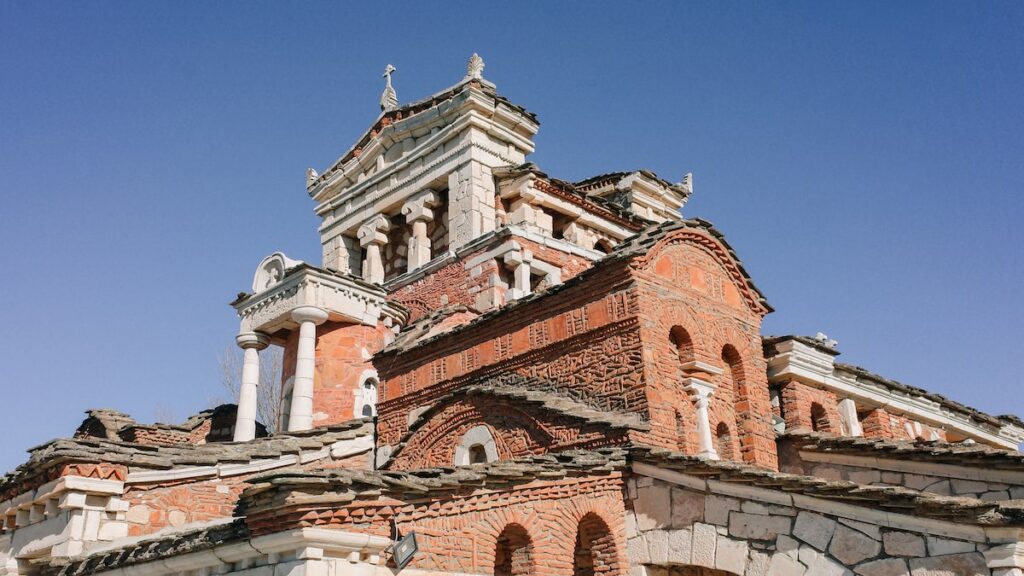
Located exactly opposite the archaeological site of Mantineia, the church of Agia Fotini lies approximately 13 kilometers away from Arcadia’s capital, Tripolis. The architect, Kostas Papatheodorou, envisioned a church that combines ancient Greek elements and Byzantine influences.
In order to get a deeper overview, Fotini in Greek translates to “the luminous one.” Papatheodorou claimed that Agia Fotini is a tribute to the strong relationship between Arcadia and the light. An extra layer of symbolism derives from the fact that the nearby mountain, Lykaio, stands for “the bright one,” and the same goes for Lykaon, the first settler of Arcadia. Therefore, one of the first things to keep in mind when visiting Agia Fotini is the strong connection to the light.
On the other hand, the church’s interior hosts icons of saints, but here there’s also a twist. The face portrayed in the interior or strongly influenced by ancient Greek philosophers. That’s rare -if not unique- and the saints’ depictions always caused controversy.
A brief history of Agia Fotini Mantineias
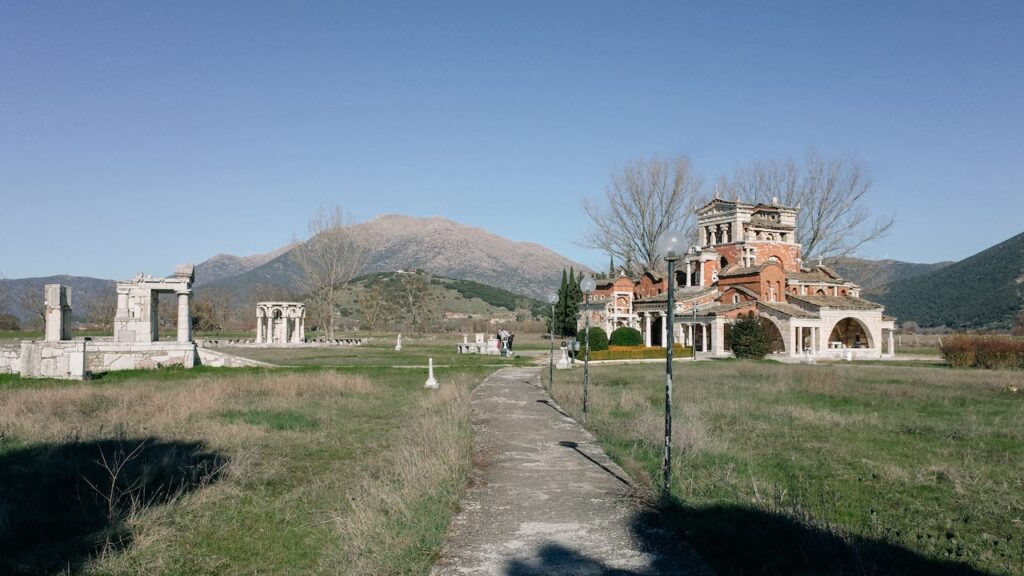
The construction of the Greek orthodox church of Agia Fotini Mantineias began in 1971. The architect supervised twelve Arcadian craftsmen, and two years later, in 1973, the church took its current shape. According to the inscription in the church’s entrance, the crew worked ten hours per day, with a two hours break. Papatheodorou was always present and paid attention to every detail of the construction.
Agia Fotini Mantineias has three sanctuaries. The first one is dedicated, obviously, to Agia Fotini, while the other two are dedicated to Kosmas Aitolos and Apostle Filippos. In the latter, one can also see Saint George’s icon. It is worth mentioning that the access to the middle sanctuary resembles the catacombs of Rome, the place where Saint Fotini died.
As I already mentioned, the church doesn’t belong to any known architectural style or order. There’s a combination of elements combined, ranging from ancient Greek to Byzantine.
To add an extra layer of depth to the building’s history, the architect didn’t use cement in the construction. Instead, he preferred handmade bricks from nearby Tripolis and unused materials from quarries. The so-called Greekness and ethical values are commemorated by the figures of four poets in the corners: Homer, Pindar, Aeschylus, and Papadiamantis.
Last but not least, there’s no electricity in Agia Fotini Mantineias Church.
The other buildings of Agia Fotini church in Mantineia
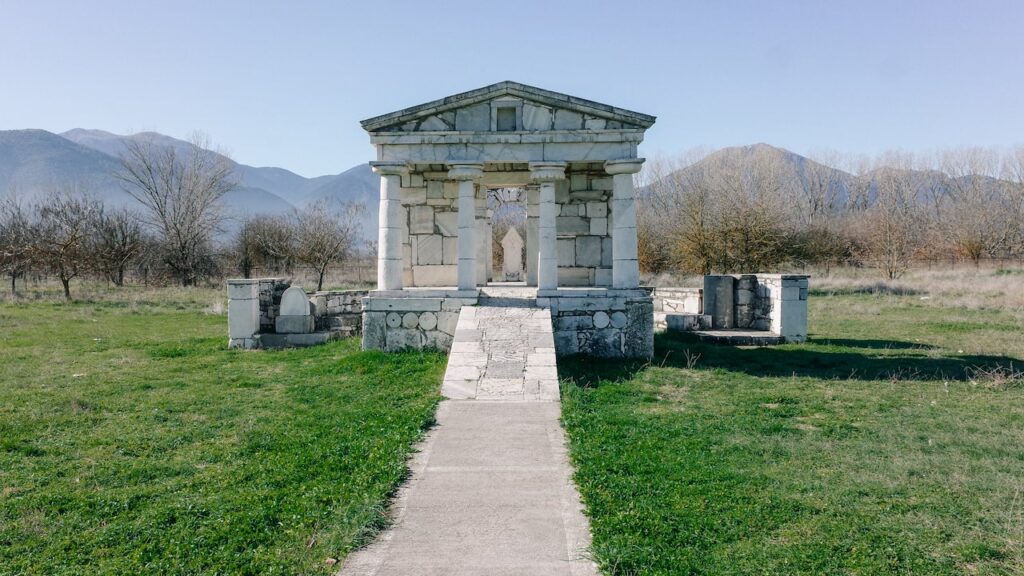
Although the church is set in an open space, oddly enough, there are actually two more buildings belonging to it.
The first building is the so-called Heroon (Greek: Ηρώον), a monument often dedicated to the people that lost their lives in wars. However, it mainly serves as a tribute to people’s internal peace and was erected in 1979-80. It is a semi-complete building, and it faces toward the East. The orientation is not random: it actually faces the direction of Agia Fotini of Smyrni (Izmir) in former Minor Asia.
The second building is Jacob’s Well (Greek: Φρέαρ του Ιακώβ), commemorating the influential talk of Jesus with Saint Fotini, the Samaritan. It is made of marble, and its construction resembles an ancient theater.
The location of Agia Fotini in Mantineia, Peloponnese
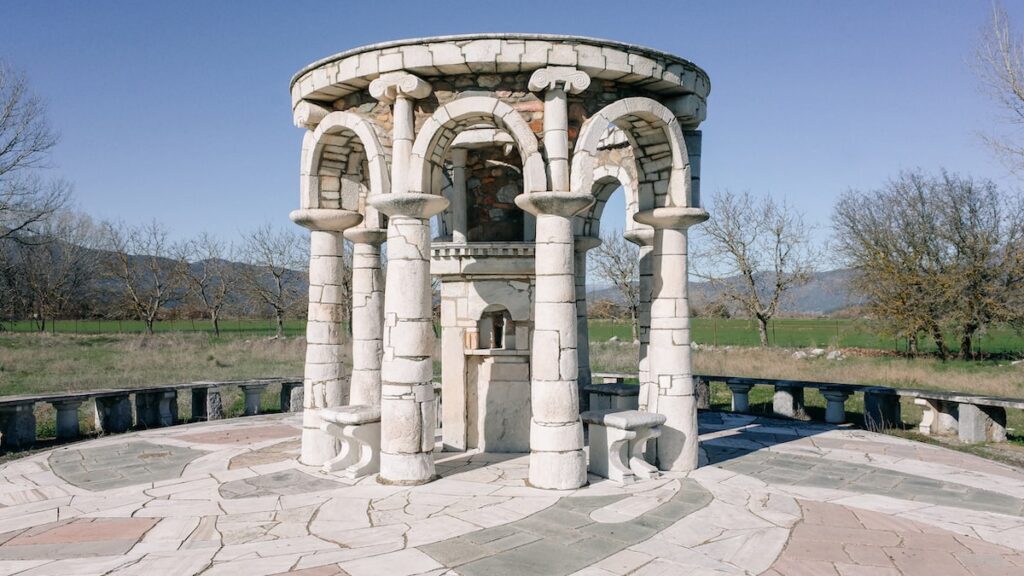
The church of Agia Fotini is approximately fifteen minutes away from Tripolis. On the opposite side, you can visit for free the archaeological site of Ancient Mantineia, where the battles of Mantinea took place.
You can see the church’s exact location on Google Maps here.
More photos from Agia Fotini Mantineias
In this section, you can see some extra photos of the church, its interior, and the surrounding area.
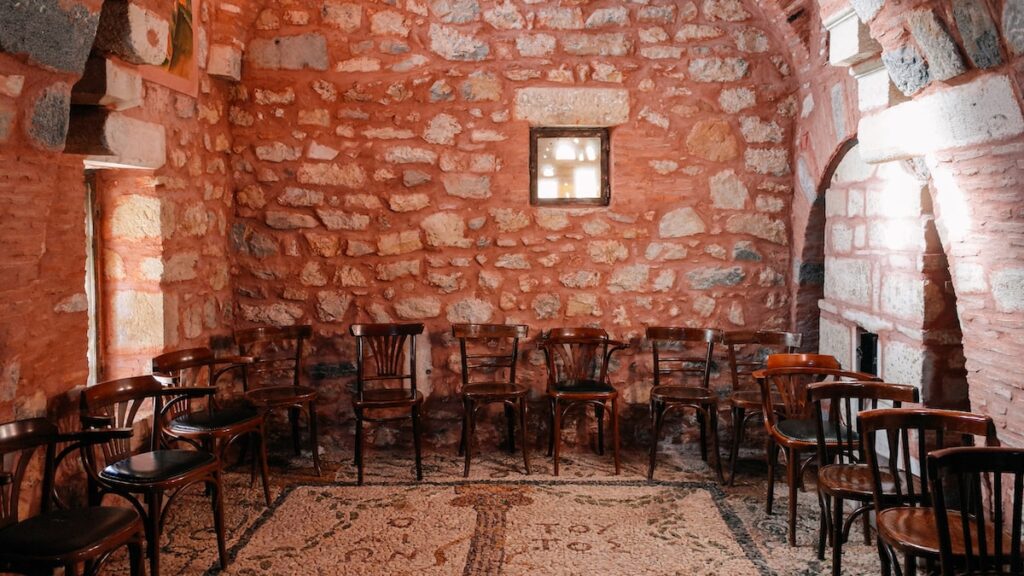
As I wrote earlier, the church has no electricity, making photography challenging. The following images are shot in high ISO, so please bear with the noise in the pictures.
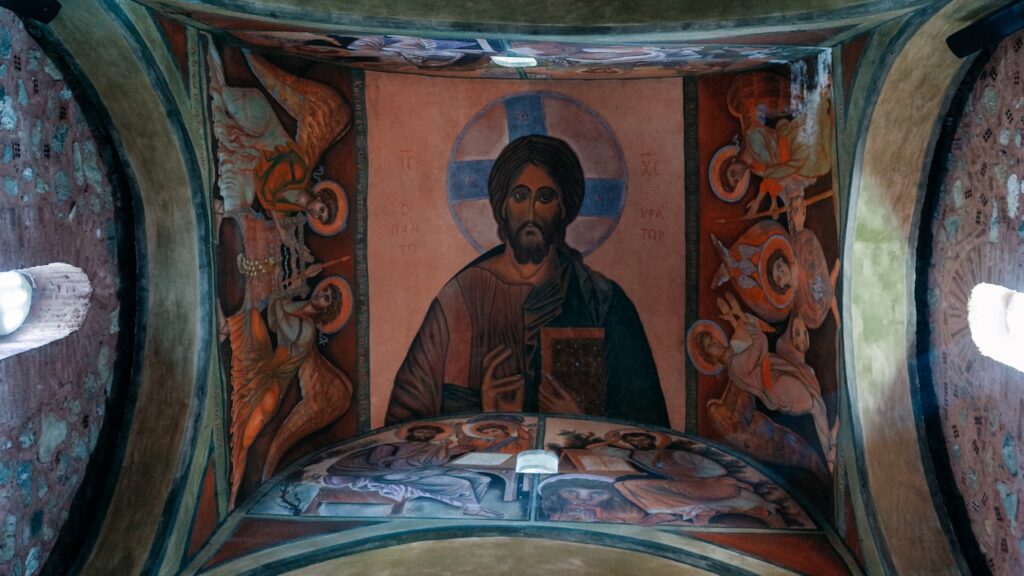
There’s a note next to the candles that visitors should blow them out before leaving. There’s an elevated danger of fire, and since the area consists of plains, a fire could lead to a disaster.
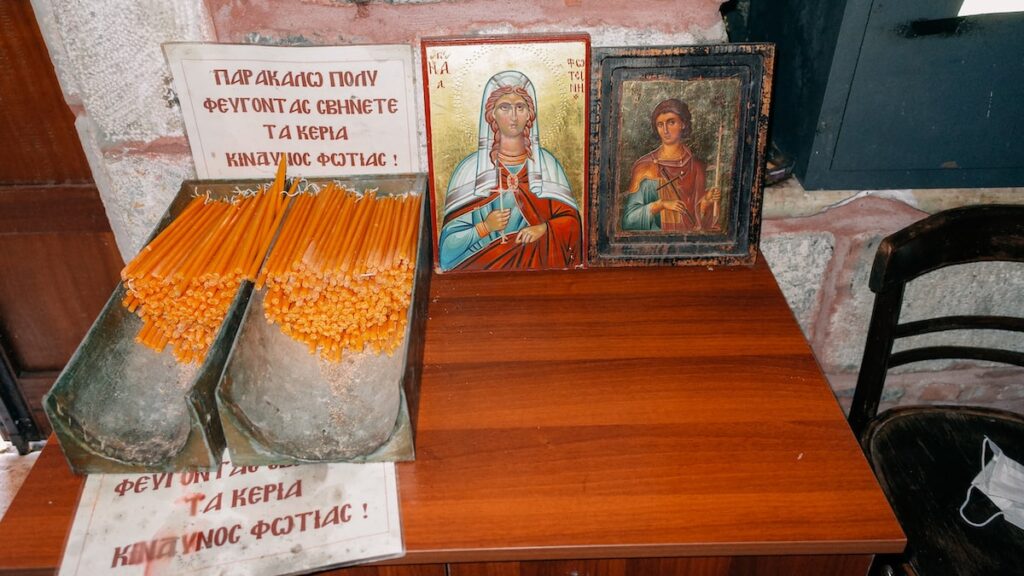
There’s also a note advising parents not to leave their children unaccompanied. According to the sign, the kinds might pollute the church’s interior and exterior.

Several icons are inside the church, and I did my best to photograph them. However, my Ricoh GR ii struggled due to low light conditions, but you can at least get an impression.
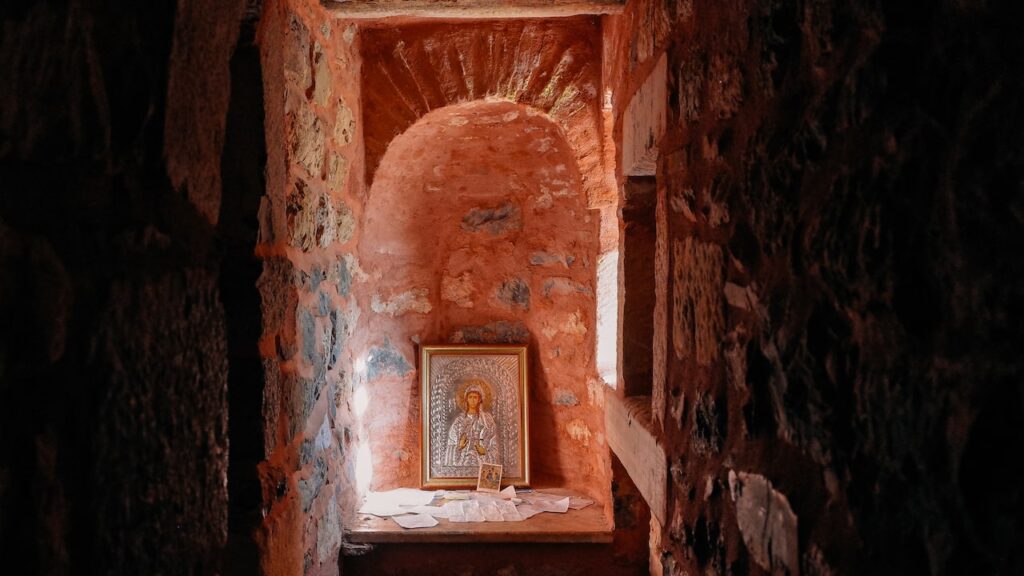
The church’s exterior is impressive. Here’s one more photo from its roof.
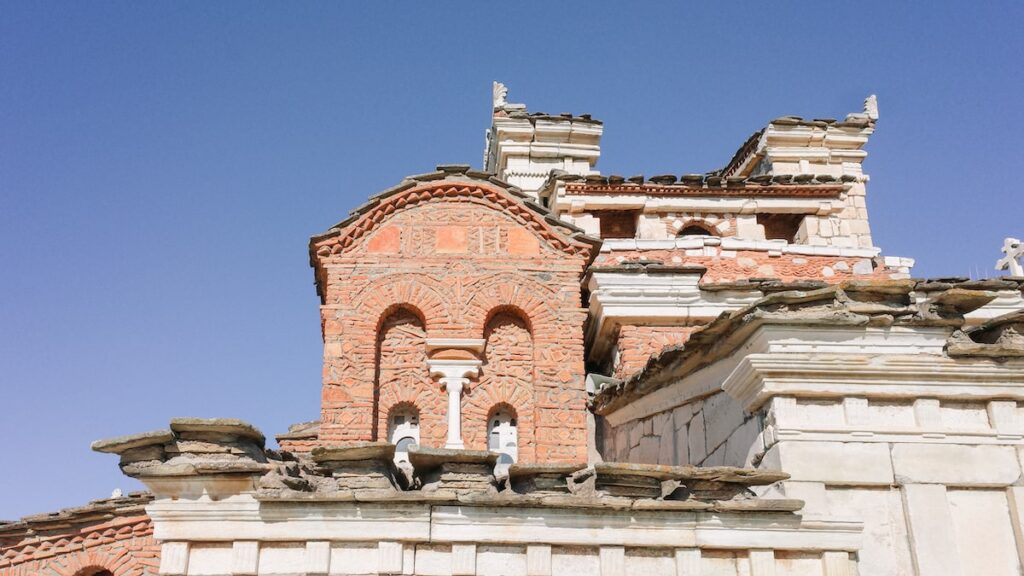
Agia Fotini is located next to the Mantineia Archaeological Site. You practically have to cross the street to visit it. There’s no entry fee; here, you can get an impression of what it looks like.

And if you are wondering about the plains of Arcadia, here’s an image taken from the archaeological site. You can see a shepherd on the right and sheep on the left. The capital of Arcadia, Tripolis, is just 15 minutes away, but as you can see, the landscape is breathtaking.
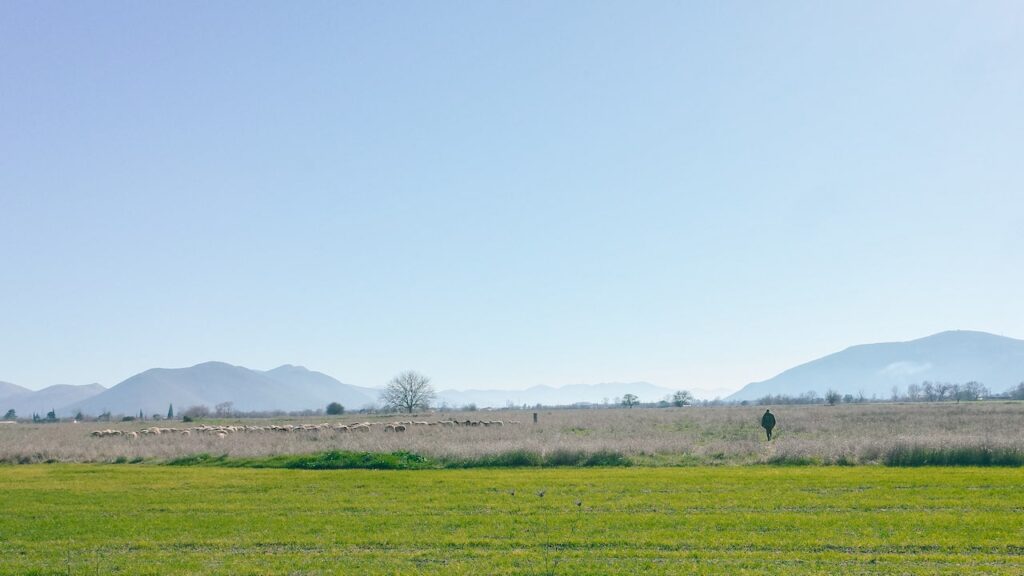
And that’s it with the photo report from one of the most unusual churches in the world.
Agia Fotini Mantineias Church: Final thoughts
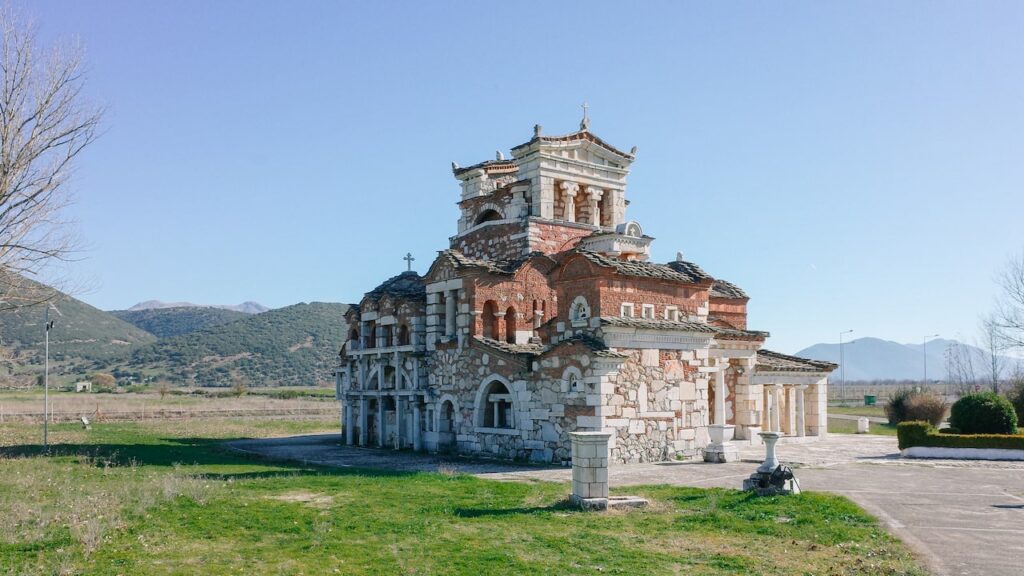
The orthodox church of Agia Fotini Mantineias rightly ranks among the most peculiar churches in the world. Its unusual architecture and interesting background story make Agia Fotini one of the most exciting places in the Peloponnese. If you’re on a road trip to the Peloponnese, adding a stop to your itinerary is a must.
In addition, the nearby archaeological site of Mantinia is a great addition to your trip. Although there are only a few things to see there, observing the Arcadian plains and enjoying the distant views of the most unusual orthodox church in Greece will definitely be a highlight of your journey. The architect claimed that this is a temple connecting civilizations, and even if you’re non-religious, it definitely deserves to be explored and photographed.
More about the Peloponnese: Ancient Corinth, Nemea, Mycenae, Ancient Epidaurus, Acrocorinth, Sykia
Pin it for later
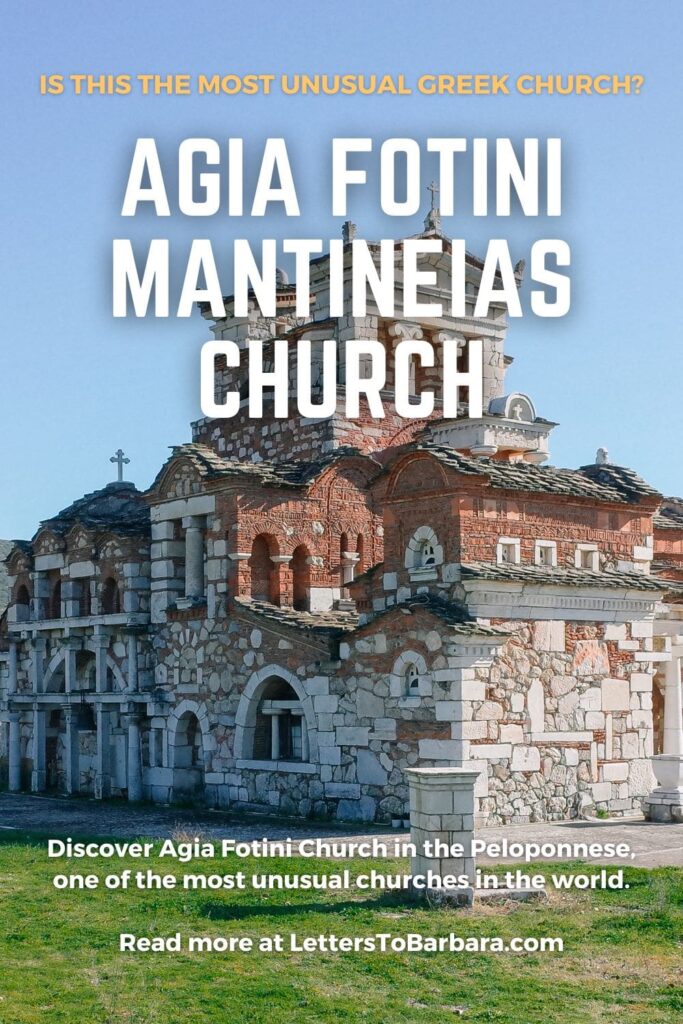
Sharing is caring. Share this article about the Greek church of Agia Fotini Mantinias with your friends.
Last Updated on August 26, 2023 by George Pavlopoulos


